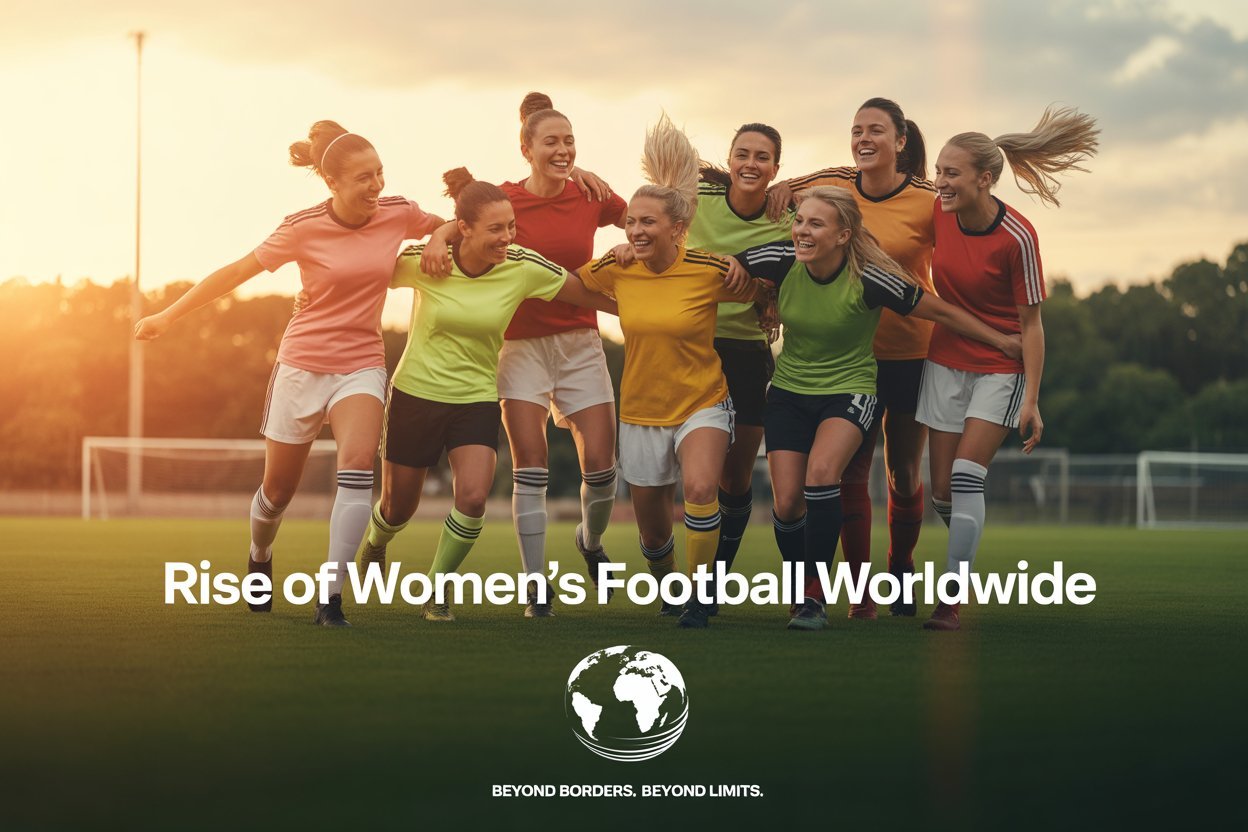
The Changing Face of Women’s Football
It would be an understatement to say that women’s football has developed and changed. It was once a fringe activity but is now being consumed at a globally massive scale, filling stadiums all over the world, and inspiring millions. Women’s football has truly established itself as a movement with cultural and athletic importance that in society is very meaningful. From local grassroots training programs to showcase opportunities at international events, women’s football has arrived and is here to stay.
Key Milestones in the Global Rise of Women’s Football
FIFA Women’s Football World Cup Revolution
The FIFA Women’s Football World Cup has been a massive contributor to women’s football:
- 2019 in France: Over 1.12 billion people around the world watched the event. The USA defeated the Netherlands 2–0 in that final.
- 2023 in Australia/New Zealand: Spain won their first title defeating England 1–0 in a final regarded as a new period for women’s football.
These would both, as we can see, show that women’s football can create eye-catching moments on the world’s biggest stages.
Olympics and Continental Women’s Football Tournaments
Women’s football made its Olympic debut in 1996, and while the U.S. were dominant for many years, countries like Canada (2021 Olympic gold medal lists have changed that landscape.
Continental tournaments like the UEFA Women’s Euro and the AFC Women’s Asian Cup have increased the competitiveness of women’s football, including:
- European nations: 2022 UEFA Women’s Euro Final: England beat Germany 2–1 at Wembley Stadium.
- African nations: South Africa, winners of the 2022 CAF Women’s Africa Cup of Nations.
- Asian nations: China PR as the current champion.
- North American nations: United States as region dominated (multiple CONCACAF championships).
- South American nations: Brazil, ongoing Copa América Femenina dominance.
These competitions have raised the quality of women’s football at the global level.

Women’s Football Clubs Redefining Excellence
FC Barcelona Femeni: Women’s Football Powerhouse
FC Barcelona Femeni are now a worldwide benchmark for excellence in women’s football. Their repeated success in the UEFA Women’s Champions League and their commitment to youth development will encourage more than a billion girls across the world to pursue their dreams of playing football.
Chelsea Women: A Pillar of English Women’s Football
Under the leadership of Emma Hayes, Chelsea Women have elevated the Women’s Super League (WSL) to one of the most professional, competitive leagues in women’s football, there investment in elite players and elite facilities is an important benchmark.
Other leading clubs in women’s football include:
- Olympique Lyonnais Féminin (France)
- Wolfsburg (Germany)
- Corinthians (Brazil)
- Tigres Femenil (Mexico)
These clubs are all investing in women’s football, particularly with their academies and visibility.
Women’s Football in the Media and Market
Broadcast and Streaming Growth in Women’s Football
There is an unprecedented amount of visibility for women’s football. The number of domestic leagues and international competitions on major TV Channels and streaming platforms is unbelievable. The 2023 World Cup was shown in over 200 countries.
Sponsorship Surge in Women’s Football
Nike, Adidas, Visa and Coca-Cola’s support of women’s football has extended through sponsorship of teams, support for athletes and support of tournaments in women’s football. The growing commercial platform is closing the gap between men’s games.
Women’s Football Stars as Global Icons
Players like Alexia Patella’s, Sam Kerr, Ada Hegerberg, and Alex Morgan have become renowned names. Many of these stars are also social media giants, which help grow women’s football and inspire the next generation.
Challenges Still Facing Women’s Football Today
Women’s football has taken great steps forward, but it still has some systemic issues. These include:
- • Salary Gaps: Equal pay is still a real issue, particularly outside the elite federations.
- • Media Coverage: Women’s football does not get the same media coverage as men’s football.
- • Infrastructure Issues: Many women’s teams are not provided with training and/or medical resourcing/services to the standards of men’s teams.
- Limited Professional Structures: In some areas, there is still not a real structurally professional women’s football league.
All these factors slow down growth, but increased awareness is creating more systemic pressure for change.
Grassroots Development Driving Women’s Football Forward
Women’s football is reliant on youth and grassroots programs:
• FIFA Women’s Football Development Projects
• UEFA “Together #WePlayStrong” initiative
• National education and training programming partnerships
The U.S., Germany, Netherlands and Japan provide examples of how strong grassroots systems produce successful senior women’s football teams.
What’s Next for Women’s Football?
The momentum behind women’s football is continuing to build:
- 2027 FIFA Women’s Football World Cup – bidding process taking place with anticipated record audience views.
- Club World Cup for Women – FIFA has confirmed their intention to create a women’s edition.
- More Professional Leagues – Mexico, Argentina, and India are creating/expanding women’s football leagues.
- Women in
- Esports Football – EA Sports FC – has introduced women’s teams into video games and is helping to popularize the game.
Conclusion
Women’s football is much more than a game, it symbolizes inclusion, opportunity and empowerment. Today, the world is finally recognizing its true worth women’s football is real, and it is here to say! With investment, education, and backing, women’s football has the capacity to extend beyond just today, but more importantly extend for many generations to come. As they say, this is just the start the most inspiring chapters are yet to come.




